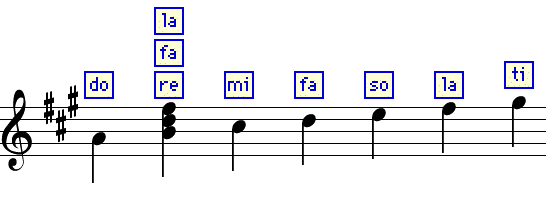Answer: The supertonic triad sounds like it would be a triad born with special powers, but disappointingly is nothing more than the triad built on the second step of the scale (and using just notes of the scale).
So, here's how you form it. The A major scale is A, B, C#, D, E, F#, G#. The second note is B, so that's the root of the supertonic ("above the tonic") triad. A triad built on B and using the above scale notes would come out as B, D, F# (remember that a third covers three note names, so B to D makes a third and D to F# makes another). That's a minor triad, and in a major key the supertonic triad is always a minor triad.

But you mention syllables, so you might want these names in solfege. Same principle applies: if the major scale is Do, Re, Mi, Fa, So, La, Ti, then the supertonic is Re, and the supertonic triad is Re, Fa, La.

The minor scale would also have a supertonic triad, and it would be different. If that scale were F# minor (using the same key signature as A major), the scale notes (natural minor) would be F#, G#, A, B, C#, D, E, and the supertonic triad would be G#, B, D - a diminished triad (two minor thirds adding up to a diminished fifth). In solfege syllables a minor scale reads La, Ti, Do, Re, Mi, Fa, So, and the supertonic in minor would therefore be Ti, Re, Fa.

For the textbook reference, degree names such as "supertonic" are discussed on page 40 of Exploring Theory with Practica Musica, and the supertonic triad and all its siblings are on pages 53-54.

